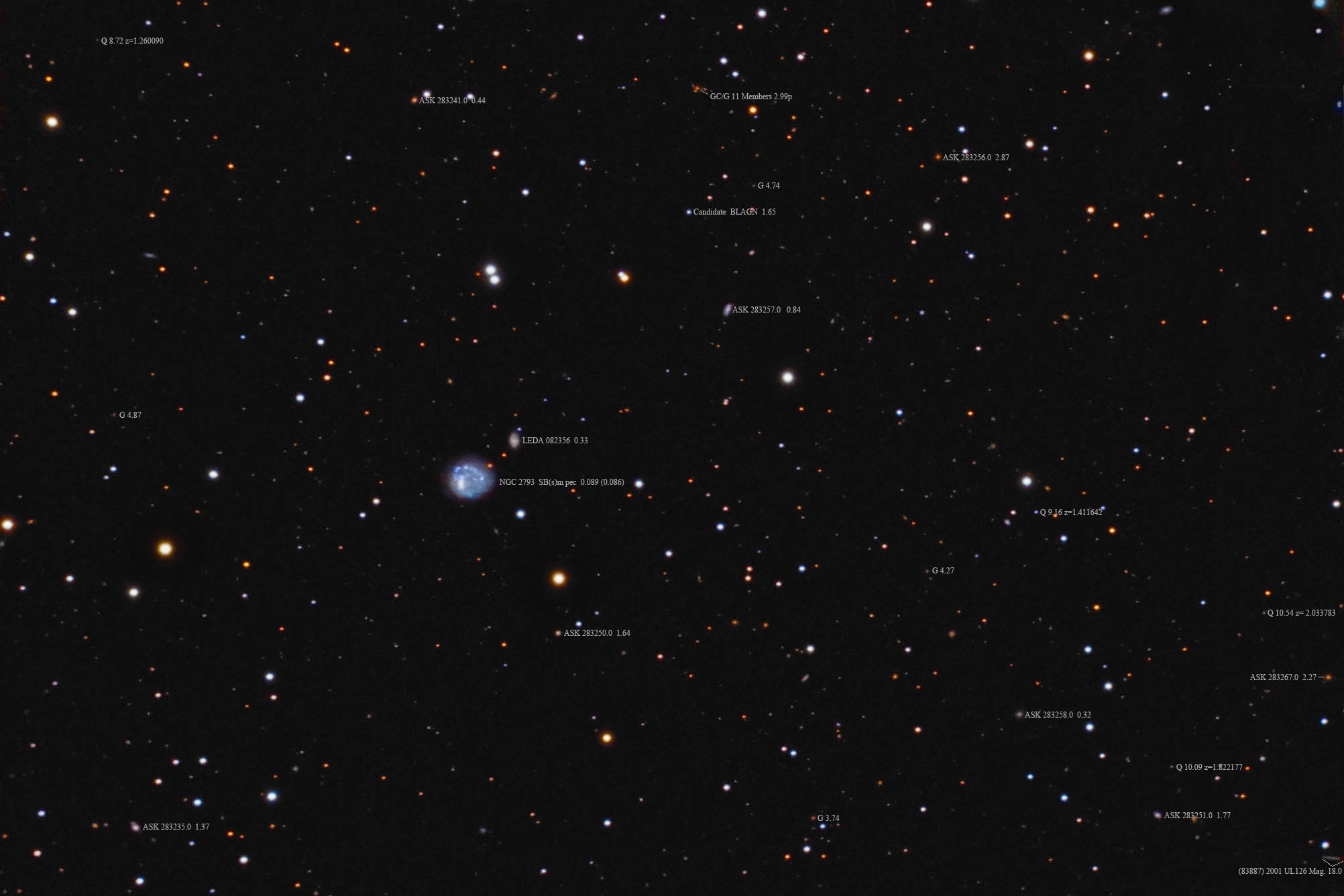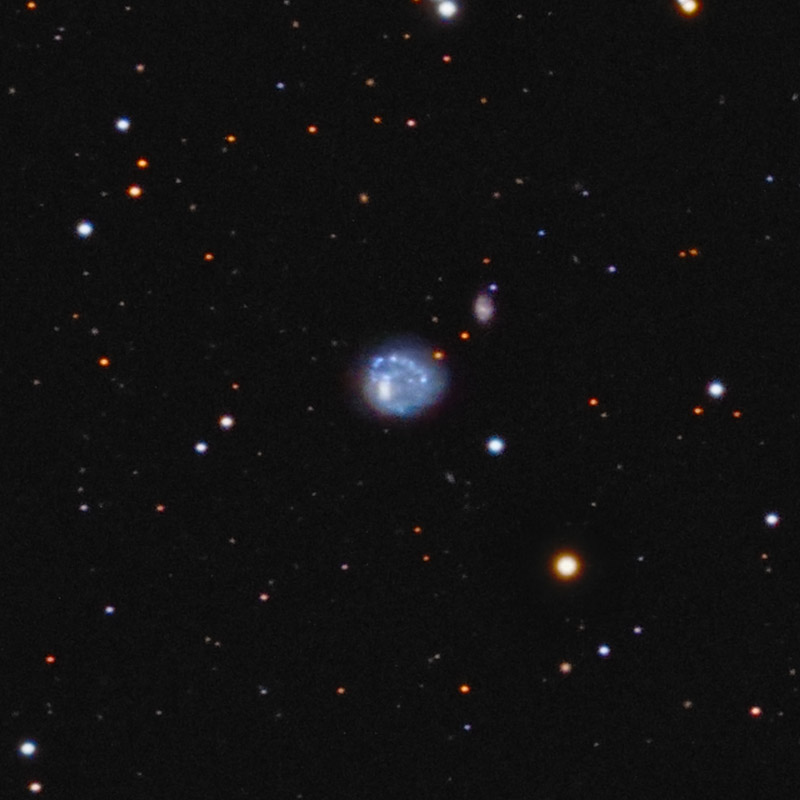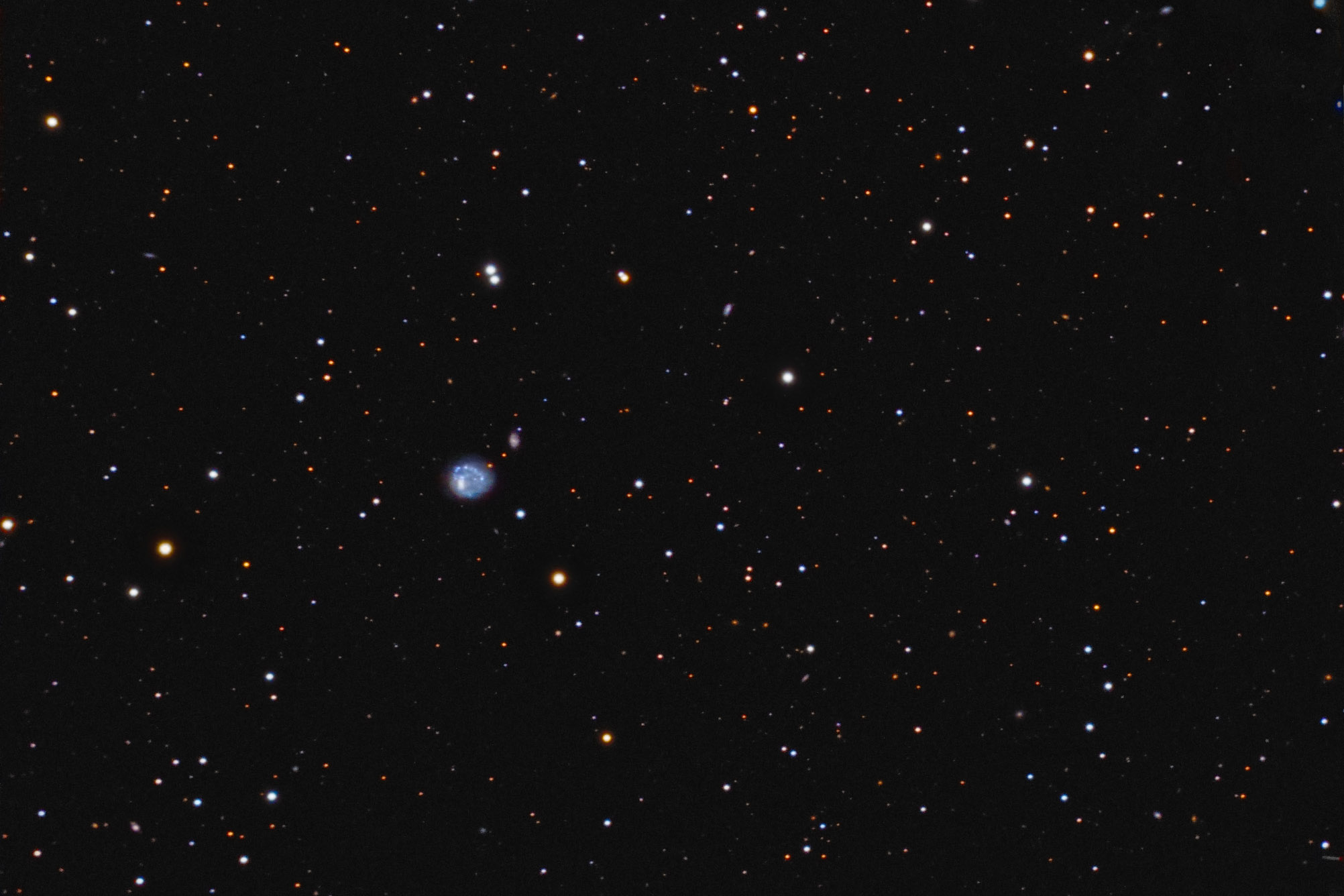| Description | Images |
Object name: NGC2793Designation(s): NGC2793, NGC 2793 is another galaxy I'm surprised Arp didn't find a place for in his Atlas of Peculiar Galaxies. It certainly is peculiar and quite similar to Arp 6/NGC 2537, the Bear Paw Galaxy, but with "wind effects". He has a category for interacting galaxies he calls "Wind Effects". NGC 2793 certainly appears to have a strong east wind blowing across it creating wispy blue streaks across it. It also is a ring galaxy which he included but again these were interacting galaxies. In fact, ring galaxies like 2793 are usually thought to be the result of a near direct hit on the core of a spiral by a dense "bullet" galaxy. Yet there's no candidate for a "bullet" in this case. I found only a couple papers discussing this. They mention LEDA 082356 as a possible "bullet" saying its redshift is unknown. Turns out it is now known and at nearly 4 times the distance can't be the cause. Neither paper considers the bright core might hide a dense superimposed bullet nor has their apparently been any follow-up studies of this galaxy. I find the rectangular core shape another oddity. Usually, the pushed to the ring the core takes on an arc that matches the ring's arc. It may be this galaxy just naturally looks this way but I find that hard to believe. The ring of star clusters along the edge is hard to explain without some outside force being involved. It was discovered by John Herschel on March 6, 1828. Related Designation(s):2MASS J09164734+3425480, 2MASX J09164731+3425471, 2MASXi J0916473+342547, ABELL 0779:[HO98] 441, CG 0251, CGCG 0913.7+3439, CGCG 181-006, IRAS 09137+3438, IRAS F09137+3438, KUG 0913+346B, LCSB S1264O, LT 06, MCG +06-21-002, NGC 2793, NGC2793, NSA 135797, PGC 026189, SDSS J091647.28+342547.8, UGC 04894, UZC J091647.2+342548, [M98j] 060 NED03, [MO2001] J091646.6+342553.6, |


